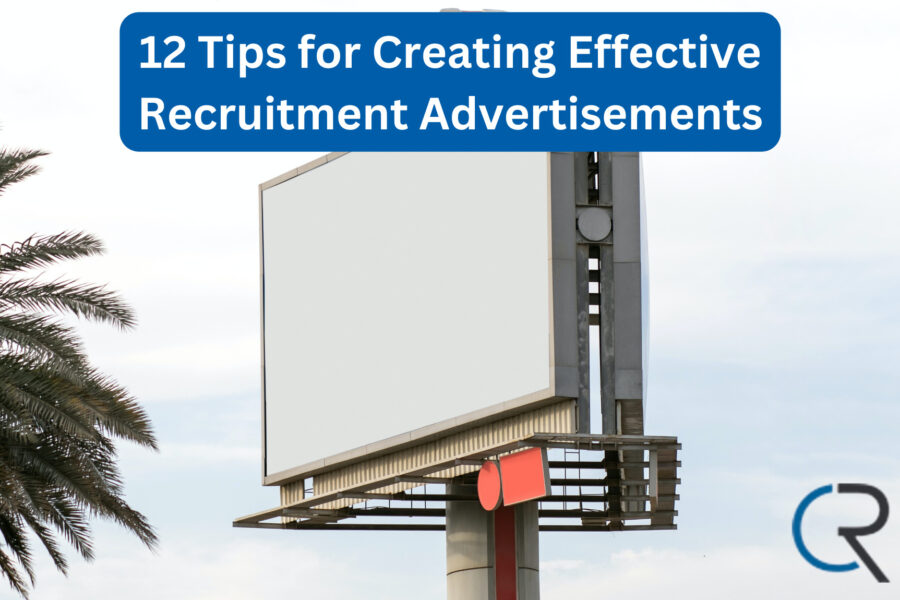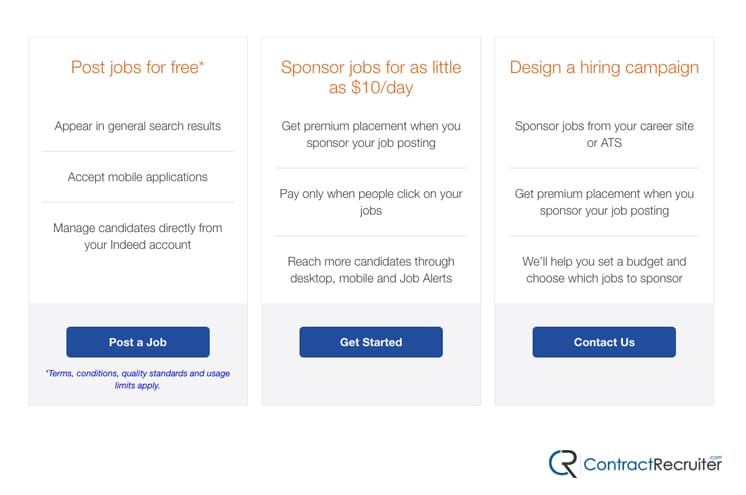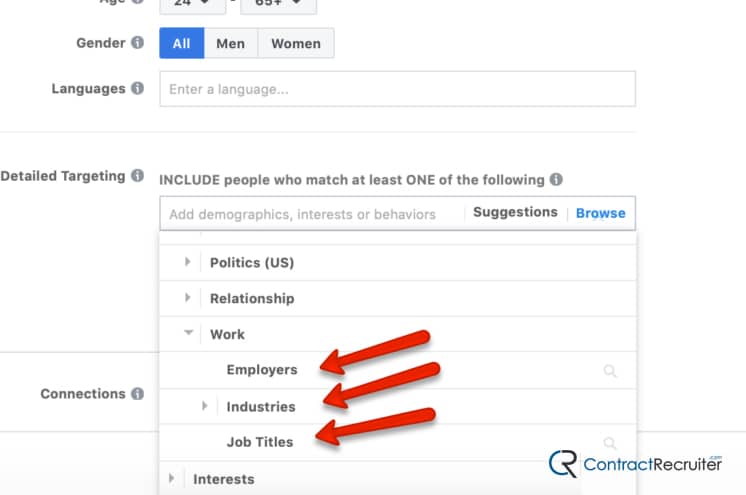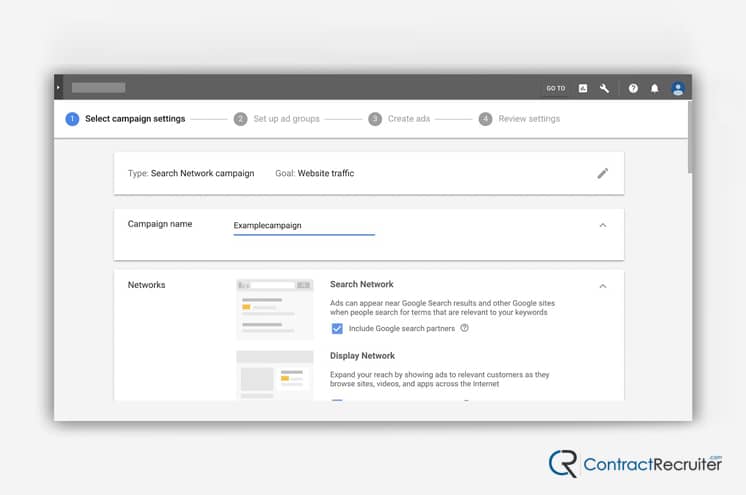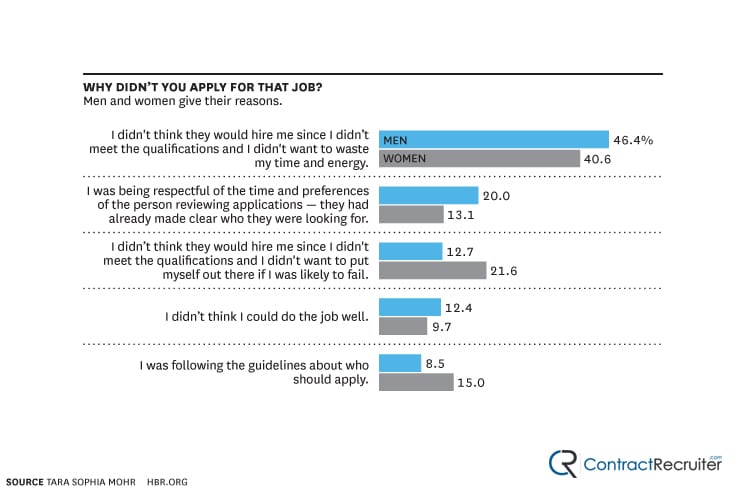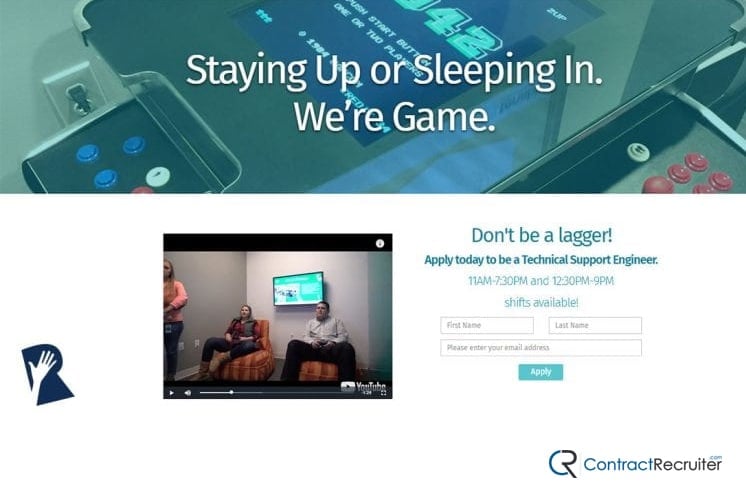If you have a position that you need to be filled and you’re planning on doing it yourself, advertising is the most popular way to get more eyes on your listing. Whether it’s a sign on the door or paid ads on social media, advertising can be an effective tool for recruiting. The more awareness that you have for your listing, the larger your candidate pool and the more applications you’ll receive.
Successfully creating recruitment advertising is a skill all in its own, and if you aren’t advertising efficiently, you could attract poor quality candidates. It’s no wonder that many companies choose to outsource their recruitment efforts altogether.
If you want to do it on your own or guide the overall process yourself, here are some tips that could improve your results:
1. Determine Your Format
The first thing you need to do is to determine the format your advertising will take. There are quite a few different options:
- Paid job listings on job sites like Indeed, Monster, or Glassdoor.
- Large graphical post-style ads on social media sites.
- In-app advertising on mobile ad networks.
- Traditional text ads on Google search.
You need to identify the channels you’ll be using, so you can create effective recruitment advertisements for the platform. To pick the right channel, think about where your ideal candidates spend their time.
Active candidates are going to be searching on job sites and LinkedIn, while passive candidates may be spending more time on search engines or social networks.
Once you have the locations down, you can figure out what kinds of copy you’ll need to create and optimize. Text is a given, but are you limited to a few hundred characters (such as with Google ads) or do you have the full body of a job listing? There is no one-size-fits-all job listing template. You’ll need to tailor your post to the platform and the people likely to be reading it.
2. Familiarize Yourself with Split Testing
A key component of all successful advertising, almost no matter the platform, is split testing. Split testing, also known as A/B testing, is the act of comparing two different versions of your advertisement to see which one performs better. You need to be able to split your target audience and reach them programmatically, though, so it only works on channels like Facebook, Google, and LinkedIn. It does not work for passive listings like Indeed or Glassdoor.
To split test successfully, you need to be able to monitor the performance for each ad, identify key data that informs you which option is better, iterate on your designs easily, and carefully configure tests to analyze only a single change at a time. It’s somewhat complex, but you can read more about it here.
Try testing these qualities, one at a time:
- Different images (on channels that use them) representing aspects of the job.
- Different primary benefits of the role.
- Different challenges the candidate will face in the role.
- Different job titles for the role (e.g. “software engineer” vs “software developer”.)
Remember that split testing is a great tool to make ads more effective, but it’s easy to get lost in the weeds testing details for minimal benefit. Use split testing, but know when to step back and let the ads work.
3. Assign a Meaningful Budget
There’s a cost to hiring a new employee. Some of that cost is internal, such as the cost of recruiting software and the salaries of the HR staff. Some of it, though, is external; the costs of web advertising, job listings, and background checks. It goes without saying, but to recruit strong candidates, you need to be willing to spend money.
It’s important to determine the budget you have available for your advertising. It should be enough to reach a significant portion of your target audience to build up that candidate pool, and it should be diversified among multiple sites and traffic sources.
Don’t forget to track your overall budget. Knowing how much you’re spending per channel (and identifying which channels are referring the best applicants to your business) allows you to readjust your budget accordingly. If Facebook is sending low-quality candidates, but some targeted Google Ads are consistently sending you high-quality candidates, you can spend less on one and more on the other.
4. Select and Optimize Compelling Images
Images attached to your job listing don’t necessarily need to be actual photographs of your workplace. They can be staged photos, or they can be photos that represent what it’s like to work in a given role.
Including appropriate images helps set your listings apart from the rest.
- Make sure the images you include are high-quality. Low resolution, blurry, fuzzy, or poorly captured images don’t give a good first impression for your company.
- Choose images representative of the specific role being advertised. A guy in a hardhat and safety vest isn’t a good choice for an office job, for example.
- Include subtle branding on the image. You don’t need your logo watermarked across it; include it in the uniform the subject is wearing. Match colors with your overall branding.
Images are one of the most commonly split-tested elements of ads that support them, so it’s reasonable to spend time capturing high-quality images for the first attempt.
5. Use Analytics to Define a Target Audience
With traditional paid advertising, you choose a target audience based on the common qualities of existing customers, as recorded by analytics platforms. Job listing sites are quite a bit less sophisticated on average than something like Facebook or Google, but they may have some analytics features available. You can still get a good idea of the qualities you want out of an employee and use those as targeting factors.
Once you’ve run your job listing advertising for a while, check the analytics of the platform you’re using. You should be able to get an idea of the qualities common to your best candidates and can narrow future audience targeting based on those qualities.
6. Make Use of Google Ads
Kat Guseva, paid search strategist for Recruitics, says this:
“A few keywords that we used that we had great success were “jobs with no experience” and “training provided” mentioned in the ad copy.”
Kat’s example illustrates that a simple choice in words can target specific audiences with a job listing. The keyword choice you use for Google ads allows you to reach people searching for specific types of jobs, and this goes beyond just the name of the role. Specific technologies used, qualities of the job like training being provided, and so on can all influence the people who see the ad.
Google is one of the largest platforms in the world for advertising, so while you’re liable to have quite a bit of competition, there’s more than enough audience to go around. Plus, Google has a wealth of tools available to help reach specific kinds of people, through a wide range of channels, including YouTube, the Google Display Network, and Google search itself.
7. Determines Needs and Wants
A good, compelling job listing will adequately distinguish between the must-haves and the wants in a role. All too often, high-quality candidates are turned off by an unclear description that makes it seem like more experience, more specific skills, or a broader skill base are required to even apply to the role.
This is also a huge suppressor of diversity. If your job listing lists a lot of qualities you simply find “nice to have” but makes no distinction between them and required qualities, you’ll find that you’ll receive many more male applicants than female and many more white applicants than minorities.
Determining what you need versus what you don’t is also important for job advertisements in channels that have a strict limit on text space. If you only have 300 characters to discuss what you need out of an applicant, you need to know those qualities to express them properly.
8. Be Specific About the Role
A common mistake many companies make is producing a single “we’re hiring” advertisement and placing roughly the same copy on every platform. This is great for building awareness of the fact that you’re hiring, but it will only attract generic job seekers. Passive candidates will ignore it entirely, and even many active candidates will skip past it because it doesn’t capture their attention.
It’s much better to create a series of individual ads for each role you have available. If your company is always hiring for particular positions, evergreen ads for those positions work just fine. If you have dozens or hundreds of open roles, it quickly becomes a full-time job to manage all of the ads. At this point, it may be better to outsource your recruitment instead:
9. Consider Your Candidate’s Concerns
A job listing is a company-serving advertisement, but it has to consider the candidate carefully. To that end, ask yourself: what does the candidate want to know? It’s easy to cover all the bases in a job listing, but creating the most effective recruitment advertisement is difficult with the limited space offered.
One option is to run multiple ads targeting the same basic audience. Each ad can focus on a different value proposition, giving a different benefit or different quality of the job to attract people specifically interested in that aspect of the role.
Whether you run a single targeted ad or multiple, understanding what your ideal candidates want out of you allows you to offer those benefits and challenges upfront.
10. Use and Optimize Landing Pages
Taking another page from traditional online advertising, job advertising should use landing pages. Landing pages are dedicated pages on your site, typically unavailable outside of the advertising channel, that go in greater detail about the job than either an advertisement or a job posting can.
Landing pages can also go into greater detail about specific aspects of a job, or of company initiatives. As Adam Fudala says:
“A landing page is a place where you can give candidates information about specific objectives that you want them to take. For example, if you have a diversity and inclusion initiative, having a landing page around this initiative to focus the candidate’s attention on it will give them an opportunity to learn exactly what you want them to know.”
Landing pages can be customized to the role, or to the ad, such that each ad has its own landing page, even if multiple ads are promoting the same opening.
11. Decide on Salary Information
A contentious issue amongst companies and hiring managers is whether or not to include salary information in a job listing. On one hand, including it in the listing – and in the advertising – can attract candidates who find that salary to be a step up over their current position. It can be a great motivator for some highly qualified candidates, including passive candidates, to decide to leave their current job in favor of your open role.
On the other hand, some candidates will find it to be a pay cut, and it will more firmly entrench them where they are. Even if you have extensive benefits and other reasons why you would be a good fit for that candidate, the initial impression turns them off.
We discuss the matter of including salary in your job listing here. In the end, there’s no right answer; it comes down to weighing the pros and cons of your specific situation and deciding if it will turn off or engage the right candidates.
12. Consider Unorthodox Advertising Channels
The major advertising channels, like social networks, Google Ads, and job site promoted posts, are typically filled with companies doing the same kind of advertising you are. Costs can be high, targeting can be tricky, and users can be disengaged from the process because of the volume of ads they see every day.
As such, it can be a viable option to test out other marketing channels. For example, advertising directly in Gmail. Gmail advertising allows you to reach people, particularly passive candidates, while they’re otherwise working. No one likes spending time in their inbox, and a well-timed advertisement can encourage them to explore other opportunities.
Mobile app marketing is another less commonly used option for recruitment. Bored and disengaged employees frequently use mobile apps or play games at work, during downtime, and on breaks. It can be an ideal time to reach them with a cleverly-formed pitch for your open role.
Conclusion
Advertising for a job opening is a lot more complex than many companies think, but with clever use of varied marketing channels, tailored advertising for each role, and careful consideration of the intended target audience, you can quickly build a high-quality candidate pool.
Crafting effective recruitment advertisements is a multifaceted endeavor that requires a thoughtful approach and a willingness to adapt. By considering the 12 tips outlined in this blog post—from choosing the right advertising format to considering unorthodox channels—you’re equipped to create advertisements that not only reach a wide audience but also attract the most qualified candidates.
Remember, the key to successful recruitment lies in understanding your audience, refining your message, and continuously optimizing your approach based on real-world feedback.
Contact our team today to transform the way you attract talent to your organization!
Page updated on December 27, 2023.

